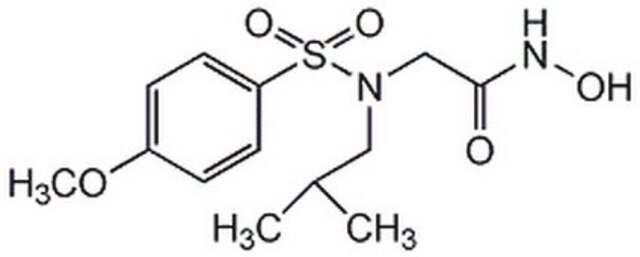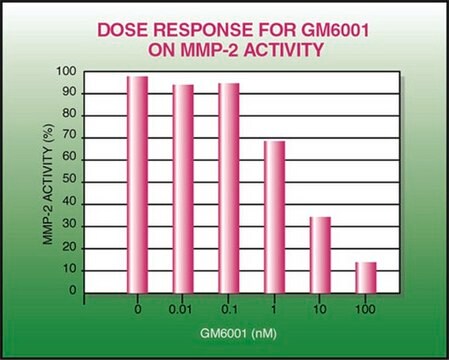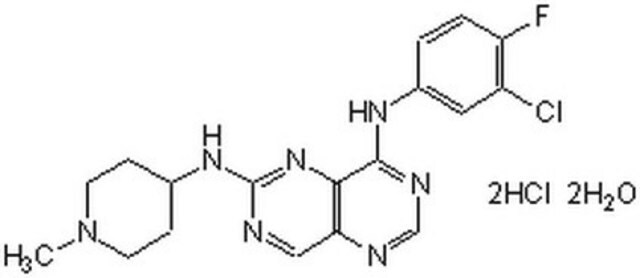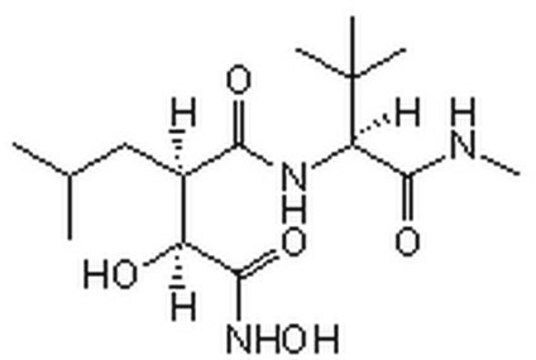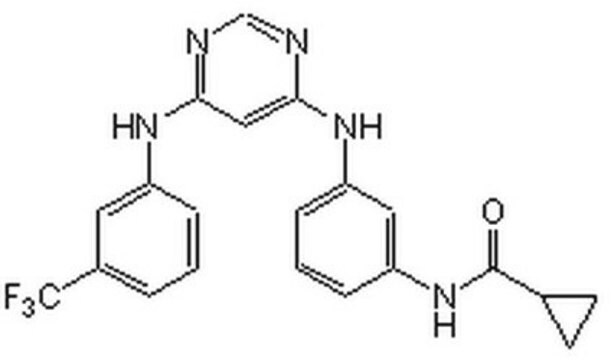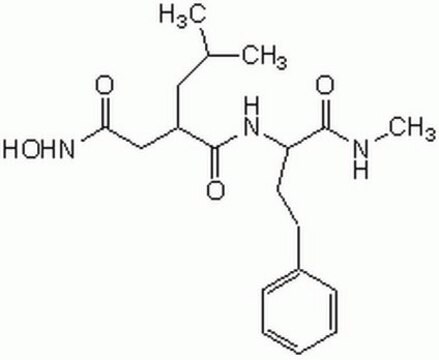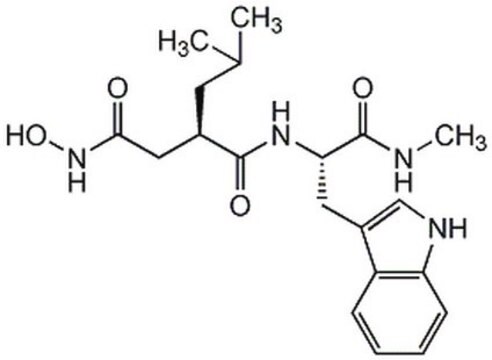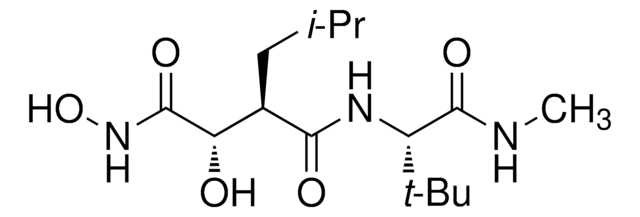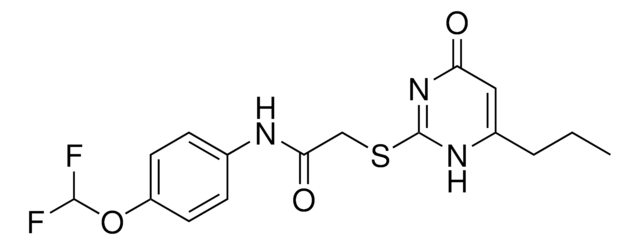444290
MMP Inhibitor V
The MMP Inhibitor V, also referenced under CAS 223472-31-9, controls the biological activity of MMP. This small molecule/inhibitor is primarily used for Protease Inhibitors applications.
Synonim(y):
MMP Inhibitor V, (2S,4S)-N-Hydroxy-5-ethoxymethyloxy-2-methyl-4-(4-phenoxybenzoyl)aminopentanamide, ONO-4817
About This Item
Polecane produkty
Poziom jakości
Próba
≥98% (HPLC)
Postać
solid
producent / nazwa handlowa
Calbiochem®
warunki przechowywania
OK to freeze
protect from light
kolor
off-white
rozpuszczalność
ethanol: 15 mg/mL
DMSO: 30 mg/mL
Warunki transportu
ambient
temp. przechowywania
2-8°C
InChI
1S/C22H28N2O6/c1-3-28-15-29-14-18(13-16(2)21(25)24-27)23-22(26)17-9-11-20(12-10-17)30-19-7-5-4-6-8-19/h4-12,16,18,27H,3,13-15H2,1-2H3,(H,23,26)(H,24,25)/t16-,18-/m0/s1
Klucz InChI
HDWWQELUBWGQGA-WMZOPIPTSA-N
Opis ogólny
Opakowanie
Ostrzeżenie
Inne uwagi
Ito, N., et al. 2004. Biochem. Biophys. Res. Commun.314, 1008.
Shiraga, M., et al. 2002. Cancer Res.62, 5967.
Mori, T., et al. 2001. Exp. Biol. Med.226, 429.
Yamada, A., et al. 2000. Inflamm. Res.49, 144.
Informacje prawne
Kod klasy składowania
11 - Combustible Solids
Klasa zagrożenia wodnego (WGK)
WGK 1
Temperatura zapłonu (°F)
Not applicable
Temperatura zapłonu (°C)
Not applicable
Certyfikaty analizy (CoA)
Poszukaj Certyfikaty analizy (CoA), wpisując numer partii/serii produktów. Numery serii i partii można znaleźć na etykiecie produktu po słowach „seria” lub „partia”.
Masz już ten produkt?
Dokumenty związane z niedawno zakupionymi produktami zostały zamieszczone w Bibliotece dokumentów.
Powiązane treści
Wybierz różne typy inhibitorów proteaz w zależności od potrzeb, aby zapobiec degradacji białek podczas izolacji i charakteryzacji oraz zabezpieczyć białka podczas przygotowywania próbek.
Nasz zespół naukowców ma doświadczenie we wszystkich obszarach badań, w tym w naukach przyrodniczych, materiałoznawstwie, syntezie chemicznej, chromatografii, analityce i wielu innych dziedzinach.
Skontaktuj się z zespołem ds. pomocy technicznej